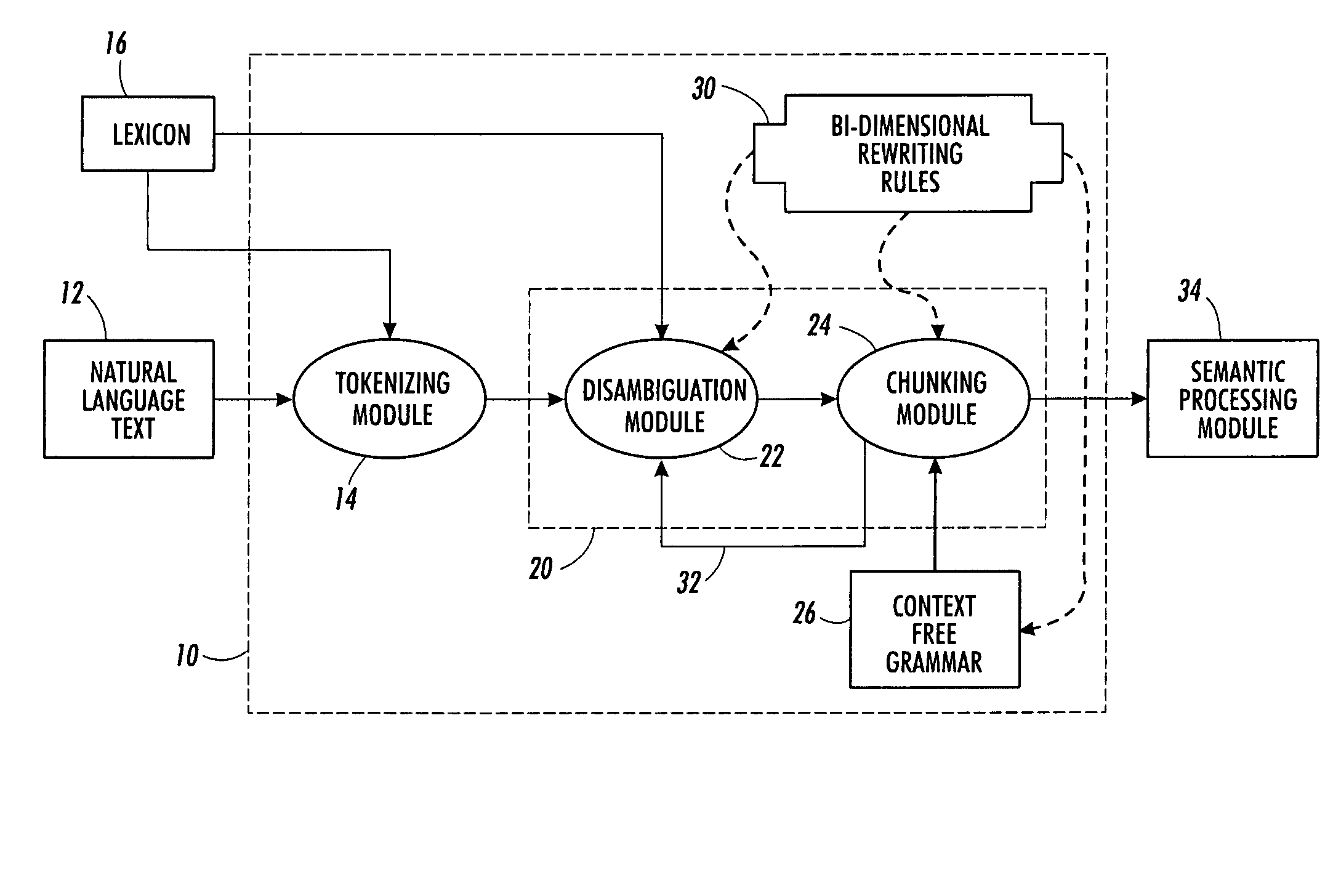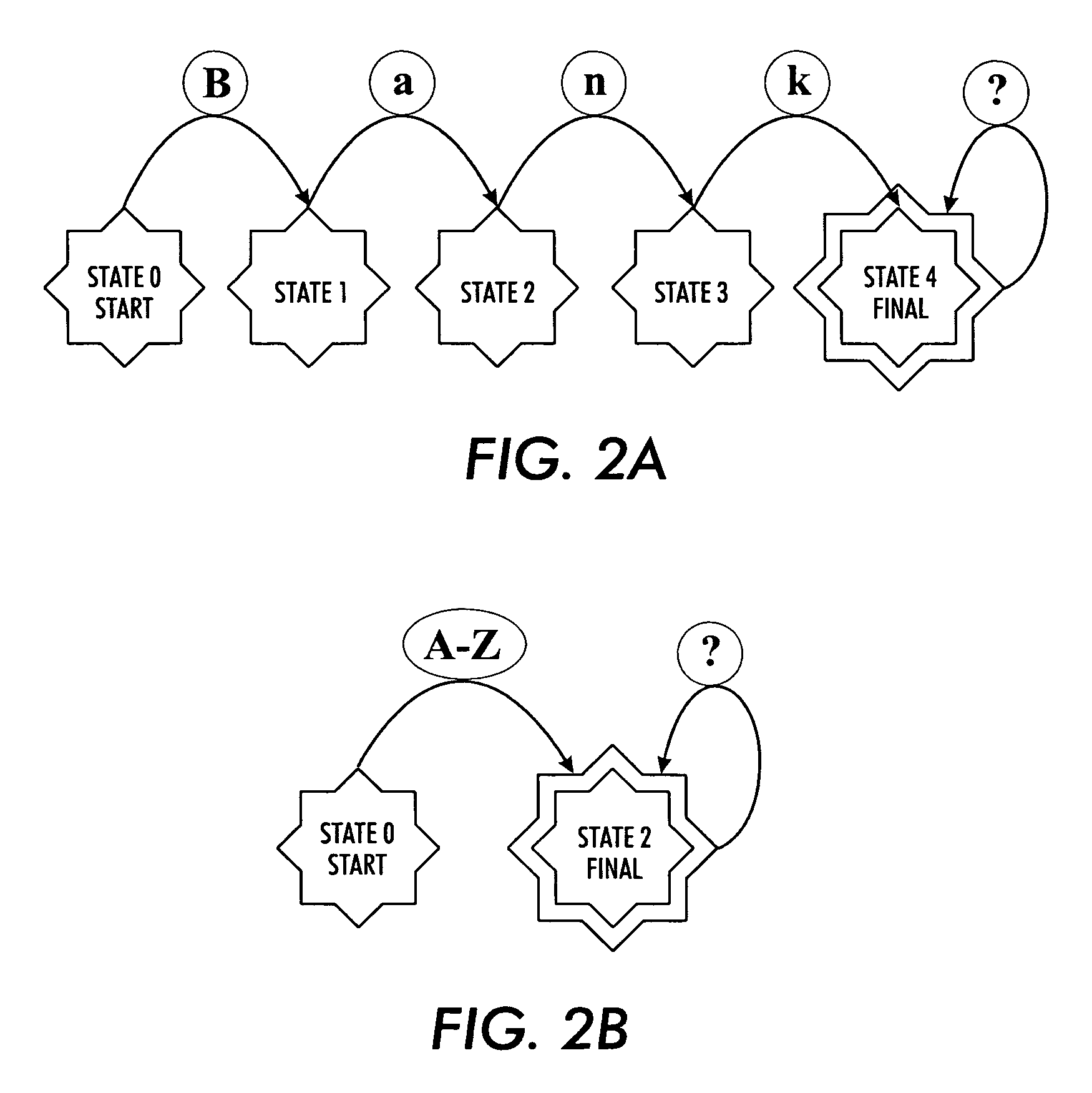Bi-dimensional rewriting rules for natural language processing
a natural language processing and bi-dimensional rewriting technology, applied in the field oflinguistic arts, can solve the problems of reducing the computational efficiency and speed of the syntactical layer, ambiguity remaining, and using proper names
- Summary
- Abstract
- Description
- Claims
- Application Information
AI Technical Summary
Benefits of technology
Problems solved by technology
Method used
Image
Examples
Embodiment Construction
[0015]With reference to FIG. 1, a natural language processing system includes a parser 10 that receives a natural language text 12, such as a paragraph, sentence, a portion of a sentence, or a multiple-word text fragment written in French, English, or another natural language. The parser 10 includes a tokenizing module 14 that breaks the natural language text 12 down into an ordered sequence of tokens. For example, in a suitable approach each word bounded by spaces and / or punctuation is defined as a single token, and each punctuation mark is defined as a single token. The tokenizing module 14 also performs lexical or morphological processing. The tokenizing module 14 attempts to assign morpho-syntactic information, semantic information, and a part of speech to each token without considering surrounding context of the token, that is, without considering adjacent tokens. To do so, it references a lexicon 16.
[0016]The lexicon 16 is a database of words of the French, English, or other n...
PUM
 Login to View More
Login to View More Abstract
Description
Claims
Application Information
 Login to View More
Login to View More - R&D
- Intellectual Property
- Life Sciences
- Materials
- Tech Scout
- Unparalleled Data Quality
- Higher Quality Content
- 60% Fewer Hallucinations
Browse by: Latest US Patents, China's latest patents, Technical Efficacy Thesaurus, Application Domain, Technology Topic, Popular Technical Reports.
© 2025 PatSnap. All rights reserved.Legal|Privacy policy|Modern Slavery Act Transparency Statement|Sitemap|About US| Contact US: help@patsnap.com



